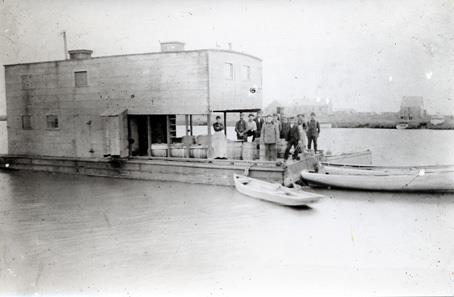History
Here where the ends of two railroad tracks protrude over mossy rocks, where the grass of the flats covers rotting foundations of houses battered by storms, was an industry that many have forgotten all about.
-Henry Charlton Beck, in More Forgotten Towns of South Jersey 1963
During the 1860s into the early 1900s the fishing village of Caviar (now called Bayside) was known as the caviar capital of the world. Caviar was home to approximately 400 fishermen who lived in nearby cabins and houseboats. The village was the source of caviar (the roe or eggs of a fish called the Atlantic sturgeon, weighing as much as 400 pounds). The tiny village was home to a small general store, a post office, a large caviar processing factory, and a train station. The Central Railroad of New Jersey transported the processed seafood from Bayside to Jersey City and Philadelphia for market.
By 1925, factory and sewage pollution coupled with over fishing caused the sturgeon and caviar industry on the Delaware to crash. Though protections were then put in place, most of the sturgeon in the Bay has disappeared, and along with it, the village.
To learn more about the history of Bayside-Caviar, check out the National Park Service.





